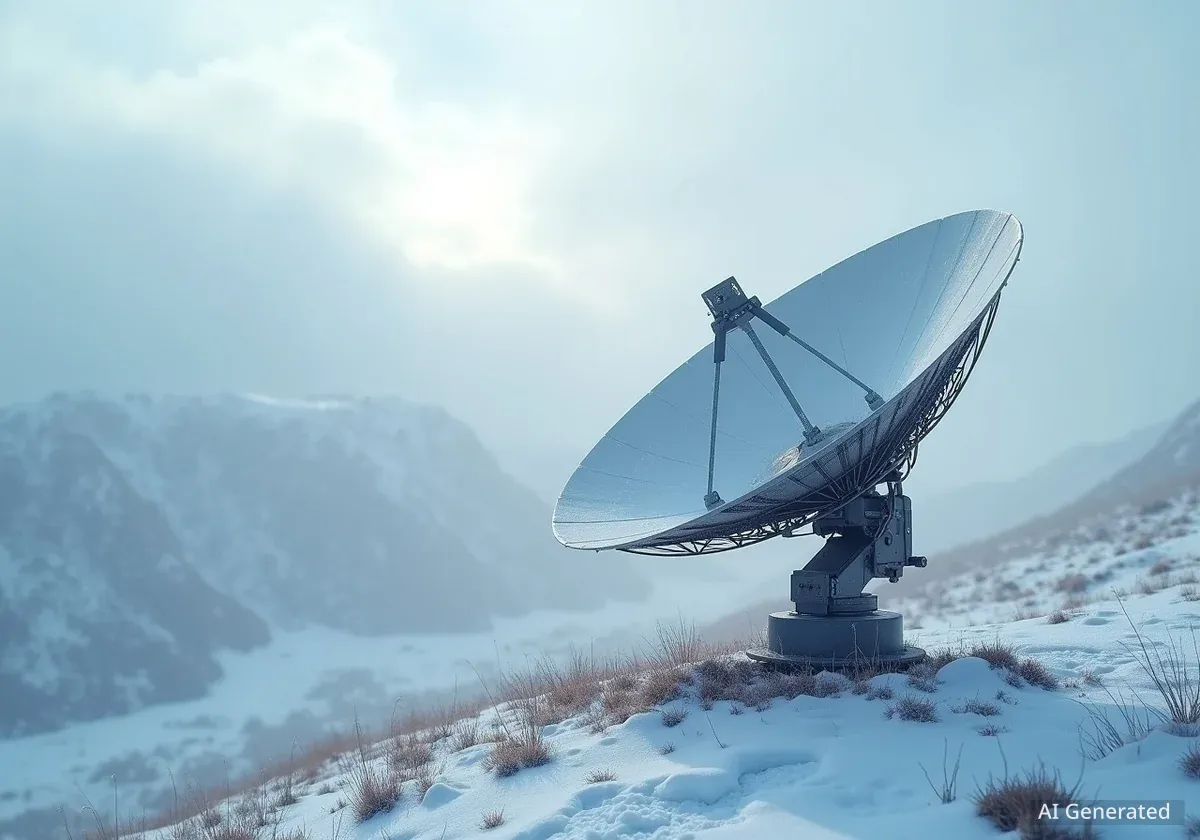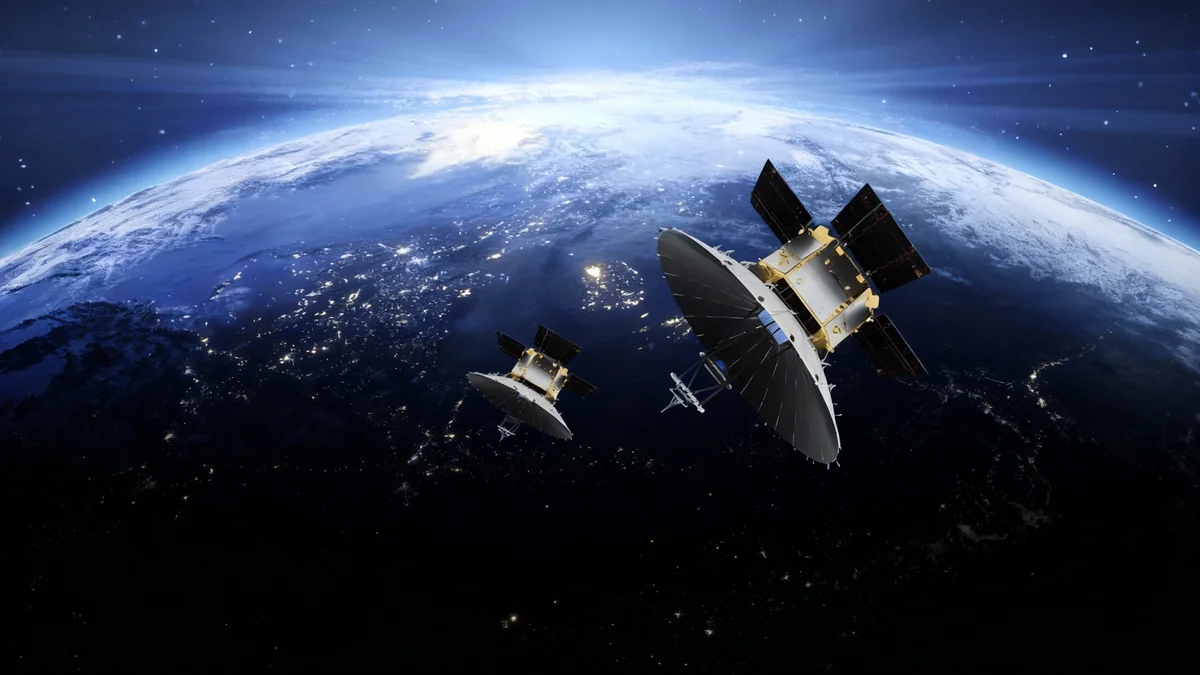Russia's aging satellite infrastructure is facing significant challenges, leading experts to suggest it may be turning to China for crucial battlefield intelligence in its ongoing war against Ukraine. While the Kremlin denies this reliance, a stark contrast in satellite capabilities and Russia's documented struggles point toward a growing dependency on external support.
Recent observations of Chinese surveillance satellites over Ukraine during Russian attacks have intensified speculation about the level of cooperation between Moscow and Beijing. This potential partnership could shift the intelligence balance in the conflict, where Ukraine has largely benefited from Western satellite data.
Key Takeaways
- Russia's intelligence satellite fleet is small and outdated, with only 32 operational ISR satellites compared to China's 262, according to a 2022 U.S. report.
- Experts believe Russia's domestic space industry is struggling with aging technology, underfunding, and the impact of Western sanctions on essential components.
- China possesses advanced satellite technology, including Synthetic Aperture Radar (SAR), which provides higher-resolution imagery through clouds and at night.
- While direct evidence of data sharing is classified, officials state China is a key enabler of Russia's war effort by supplying dual-use technologies.
A Widening Capability Gap in Space
During a recent overnight bombardment of Lviv, a city in western Ukraine, Ukrainian intelligence noted the passage of Chinese spy satellites. This occurred as Russian missiles and drones targeted the area from hundreds of kilometers below. The Kremlin has consistently stated that it possesses sufficient satellite capabilities and does not require Chinese assistance for battlefield information.
However, analysts and former intelligence officials paint a different picture. Clayton Swope, a former CIA officer now with the Center for Strategic and International Studies (CSIS), described Russia's space infrastructure as "pretty old and creaky." He suggested that accepting Chinese support would be a logical step for Moscow.
"It really seems like a no-brainer that if China is willing to offer either something from a company or from its own government capabilities, Russia will take advantage of that," Swope told RFE/RL.
By the Numbers: ISR Satellites
A 2022 report from the U.S. Defense Intelligence Agency estimated that China operated 262 satellites for intelligence, surveillance, and reconnaissance (ISR). In contrast, Russia was estimated to have just 32.
Russia's Acknowledged Struggles
Evidence suggests Russia's own space assets are not meeting its wartime needs. According to Juliana Suess of the German Institute of International and Security Affairs (SWP), Russia began purchasing commercial satellite imagery on the open market as early as April 2022.
"That sort of shows us that Russia realized that actually this is something that they would need," Suess explained. "And it also shows that their own sovereign capabilities were simply not enough to plug that gap."
The problem is not just quantity but also quality. Much of Russia's satellite fleet dates back to the Soviet era. Even newer satellites launched since the full-scale invasion have been hampered by Western sanctions, which restrict access to high-quality electronic components.
Internal Industry Problems
In a moment of unusual candor, Igor Maltsev, the head of Russia's largest spacecraft manufacturer Energia, spoke publicly about the deep-seated issues facing the industry. He mentioned chronic underfunding, "ineffective" processes, and a loss of motivation, urging his colleagues to "stop lying to ourselves" about the state of the Russian space program.
Suess added, "We can still say that Russia doesn't have particularly good Earth-observation capabilities, and this is also a broader problem that they're having in terms of their space industry lagging behind massively."
The Chinese Technological Advantage
China's satellite technology is widely considered to be far more advanced than Russia's. A key advantage is its extensive use of Synthetic Aperture Radar (SAR), a technology that can produce high-resolution images regardless of weather conditions or time of day. SAR systems can penetrate cloud cover and create detailed 3D maps of terrain and structures.
Bleddyn Bowen, an associate professor at Durham University who has advised the Pentagon, noted the strategic value of this data. "In terms of the quantity, diversity, and quality of the data the Chinese can provide, there is no doubt it'll be useful for Russian intelligence and military analysts," he said.
What is Synthetic Aperture Radar (SAR)?
SAR is a powerful form of radar used to create two-dimensional images or three-dimensional reconstructions of objects, such as landscapes. Unlike optical satellites that require clear skies and daylight, SAR can operate in all weather conditions, day and night, making it exceptionally valuable for military surveillance.
According to Bowen, access to such high-quality imagery could significantly improve Russia's battlefield effectiveness. Potential benefits include:
- Better battle damage assessment: Quickly confirming the results of missile or artillery strikes.
- Improved tracking of troop movements: Monitoring Ukrainian military maneuvers with greater accuracy.
- Faster response times: Receiving timely intelligence allows forces to react more quickly to changes on the ground.
The Geopolitical Implications
While the extent of direct data sharing remains unconfirmed, Western officials are clear about China's broader role. A U.S. State Department official told RFE/RL that "China is the decisive enabler of Russia’s war in Ukraine," noting that it provides nearly 80% of the dual-use items Russia requires for its military efforts.
The purpose of the Chinese satellite passes over Ukraine is also a subject of debate. Swope pointed out that Beijing could be gathering intelligence for its own purposes—studying modern conflict to inform its future military doctrine—rather than sharing it directly with Russia in real-time.
"It remains to be seen how close, how tactical is that relationship between Russia and China on this," Swope commented, highlighting that the two nations are not natural allies and China may be hesitant to reveal its full capabilities to Moscow.
The Data Processing Challenge
A final hurdle for Russia is the ability to process vast amounts of satellite data effectively. Modern surveillance creates a deluge of information that requires sophisticated systems to analyze. "The bottleneck is the processing," said Suess. "This is where AI comes in... filtering through the massive information that you get given."
It is unclear whether Russia has the advanced algorithms and artificial intelligence capabilities needed to turn raw satellite imagery into actionable intelligence on a large scale, a challenge that even Western militaries face.





